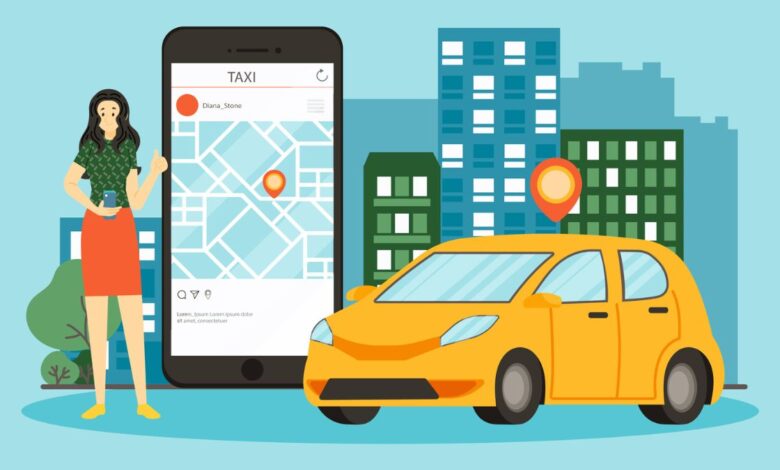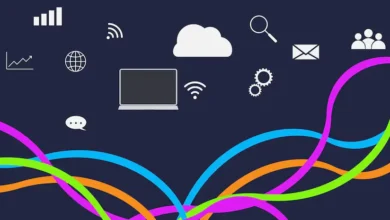Integrating Additional Service Modules into Your Taxi App Script

Taxi booking apps provide a great service by connecting riders and drivers. However, to stay competitive in today’s market, apps need to continually expand their offerings. Integrating additional modules allows taxi platforms to attract new users and generate extra revenue streams.
This article will cover 12 popular modules that can be integrated into a taxi booking script: food delivery, parcel delivery, grocery delivery, online payments, loyalty programs, push notifications, social media, maps, in-app chat, multi-lingual support, testing and monitoring. Implementing these features enhances the user experience and opens up business opportunities.
Let’s begin our tour of integrating additional modules!
Food Delivery Integration
Food delivery has boomed during the pandemic and provides synergies with ride-hailing. To integrate this:
- Add a “Food” tab allowing users to browse local restaurants listings with menus. Design an intuitive ordering flow specifying dishes, delivery address, etc.
- Partner with food vendors tapping into their existing delivery drivers. Alternatively, recruit a dedicated fleet. Ensure they have specialized bags/boxes to keep food warm.
- Track orders end-to-end from confirmation to drop-off. Notify customers of estimated time of arrivals dynamically adjusted based on traffic. Offer timeslot booking to facilitate planning.
- Process payments securely during checkout. Consider integrated wallets for express purchasing. Factor in small order fees or minimums to incentivize larger basket sizes.
- Analyze order data to understand popular times, dishes and locations. Nurture relationships with top-performing vendors.
Done right, food delivery opens a whole new customer vertical while leveraging your drivers. Standardize partner terms, menu APIs and always prioritize on-time delivery for a quality experience.
Parcel Delivery Integration
Non-perishable parcel delivery opens up business-to-business and business-to-consumer flows. To enable this:
- Develop APIs allowing shipping providers to send pickup/drop-off requests including item details, recipient address and timeframe. Design automated workflows and status updates between platforms.
- Equip drivers with mounting/securing equipment like trunk racks or cargo boxes to safely transport parcels of varying sizes and weights.
- Offer real-time order tracking to both sender and recipient. Leverage maps to provide pickup/destination directions, ETAs and notifications on route.
- Streamline hand-offs with QR-coded paperwork, preprinted labels and sign-off forms. Address special handling needs for items like signatures/IDs required.
- Process payment collections through the shipping provider. Consider scheduled dedicated delivery windows for high-volume carrier partners.
With optimized systems, parcel transit can scale ride-hailing infrastructure for business deliveries. Proper packaging and handling maintains service quality.
Grocery Delivery Integration
Fresh grocery delivery exploded during the pandemic and remains popular. Important integration points:
- Stock top items from retailers through their online catalog APIs or deliver direct from hyperlocal neighborhood vendors.
- Provide multi-day/weekly scheduling for recurring orders. Recommend substitutions for out-of-stocks to streamline fulfillment.
- Equip drivers for temperature-controlled deliveries with insulated bags and boxes. Install divider panels in vehicles.
- Consolidate rush-hour delivery windows for efficiency. Track order status en route through dispatcher. Consider booking timeslots.
- Weigh options like click-and-collect pickup lockers at high-rises, passenger acceptance of orders as additional jobs.
- Nurture partnerships, ensure fair margins, establish SLAs around stock levels, fulfillment timeframes.
With rising demand, grocery delivery expands your network’s utilitarian value. Prioritize quality, freshness standards through every hand-off in the chain. Checkout: https://zipprr.com/uber-clone/
Online Payment Integration
To enable seamless payments:
- Offer popular online methods like Visa, Mastercard, Amex, Apple Pay, Google Pay for their ubiquity and security.
- Support bank transfers and digital wallets popular in emerging markets like Paytm, Ola Money to suit local preferences.
- Integrate payment gateways like Stripe, PayPal through their APIs to accept/process transactions securely.
- Opt for recurring/subscription payments for loyalty programs with built-in authorization and fraud protection.
- Test internationalization by transacting across borders, currencies to lay the groundwork for future expansions.
- Never store full sensitive financial data according to industry best practices. Tokenize instead and enable multi-factor authentication.
With a reliable payment backbone, your riders and partners will have confidence transacting through the platform globally.
Loyalty and Rewards Program Integration
Loyalty programs boost repeat custom and advocacy:
- Design a points-based tiered system that levels up with spend amounts/trip counts over timeframes (monthly/annual).
- Award points for activities like referrals, feedback submissions, social following in addition to transactions.
- Allow redeeming points for statement credits, exclusive perks, discounts/freebies on future services.
- Track progress programmatically through a user profile portal accessible via app/web.
- Consider gamification with badges and leaderboards to further engage communities.
- Tap into emotional factors like recognition, belonging through loyalty programs to strengthen brand affinity.
Integrate loyalty seamlessly across touchpoints to maximize LTV through meaningful incentives over the long run.
Push Notification Integration
Leverage push for timely, targeted communications:
- Choose a solution like Firebase Cloud Messaging, APNS or Urban Airship for their reach and ease-of-use.
- Send transactional alerts like ride/delivery status updates, trip receipts proactively.
- Craft promotional/seasonal messages sensitively with urgency ratings and frequency caps. A/B test content/creative.
- Maintain segmented lists to push tailored notifications based on user actions/attributes like top riders, new registrants.
- Enable in-app subscription management for preferences aroundpush categories and times.
- Track analytics to gauge message performance, optimize engagement over time.
Push when it matters most to nudges conversions without annoying subscribers. Ensure quality content builds credibility.
Social Media Integration
Social can accelerate organic discovery and outreach:
- Provide single sign-on with common social platforms like Facebook, Google to streamline registration funnel.
- Allow sharing experiences automatically through integrations with social APIs – rides taken, reviews written. Attributions maintain referral sources.
- Publish platform/driver profiles to initiate conversations, build employer branding. Consider bios, photos, schedules.
- Leverage social listening tools to understand real-time sentiment, respond to queries on channels.
- Analyze social graphs to understand influencers, contextualize shares/mentions for highlighting top advocates.
- Address privacy policy around data sharing upfront to establish consent and trust from the outset.
Social forms a vital part of modern user journeys. Prioritize transparency while unlocking viral growth through light touch integrations.
Maps Integration
Mapping underpins core location services:
- Tap into map APIs like Google Maps, OpenStreetMap or TomTom for their accuracy, feature richness out-of-the-box.
- Overlay app-specific data dynamically – live driver/vehicle locations, navigation directions, ETAs, traffic conditions.
- Add routing abilities between multiple points, favorite places through embedded maps.
- Allow searching by autocomplete as users type in origins/destinations. Reverse geocoding converts addresses to coordinates.
- Integrate location/direction sharing through friends, live trip status screens for safety assurances.
- Store recent/saved places programmatically for easy recall later in profile settings.
Precision navigation reassures users and optimizes operations behind-the-scenes. Consider open-source alternatives for independence.
In-App Chat Integration
In-app chat decongests call centers:
- Partner with cloud-based omnichannel providers like Zendesk, Intercom for out-of-the-box conversational interfaces.
- Route common FAQs to self-service through an AI/bot interface before escalating to agents.
- Staff live chat 24/7 across time zones to resolve urgencies instantly from within the app flow.
- Equip agents with context on user profiles, recent activities for tailored assistance.
- Consider co-browsing for visual demonstrations, screen-shares to replicate or fix issues collaboratively.
- Measure NSAT, response times to monitor quality benchmarks for continuous optimizations.
Proactive support builds confidence for immediate resolutions without context-switching frustrations.
Multi-lingual Support Integration
Localization expands the potential audience:
- Leverage translation services to rollout localized store listings, product content into desired languages.
- Support common globally understood languages as a priority like Spanish, French based on target geographies.
- Test right-to-left display systems for cultural adaptation to Arabic, Hebrew speaking regions.
- Internationalize form filling, address patterns, date/number formatting standards.
- Maintain a centralized translation dashboard to manage workflows efficiently at scale.
- Consider cultural preferences around communication, images, icons during localization process.
Testing and Monitoring Integration
Thorough testing is critical to catch issues proactively:
- Benchmark performance across browsers, devices through tools like Lighthouse to identify bottlenecks.
- Simulate realistic usage patterns with load/stress testing solutions to harden against traffic spikes.
- Automate regression suites for API/UI checks with frameworks like Cypress to prevent regressions on code pushes.
- Integrate error reporting via Sentry or TrackJS to track exceptions/crashes remotely in production.
- Monitor app health, metrics continuously with services like Datadog. Track metrics like session length, crash rates, load times.
- Implement A/B testing for UI/copy changes. Analyze quantitative success criteria like activations, transactions.
- Leverage analytics for usage insights, auditing unknown points of failure for mean time to resolution.
Monitoring third-party modules tightly maintains oversight on dependencies for optimal QoE.
Conclusion
Integrating additional service modules provides immense opportunities for taxi booking platforms to diversify offerings and revenues. This article provided an overview of 12 commonly sought after integrations covering food/parcel delivery, payments, loyalty programs, localization best practices and more.
Proper planning during implementation, along with continual refinements based on analytics and feedback ensures modules enhance rather than detract from core experiences. Listening to evolving customer and business partner demands encourages further innovation to stay ahead of the curve. Focusing on operational excellence across integrations will help maximize lifetime value from each user and relationship.
The ability to seamlessly access an expanding set of on-demand services will attract broader demographics and use cases beyond just transportation. For ambitious taxi apps, third-party partnerships form the stepping stones to build multi-vertical super platforms of the future.




